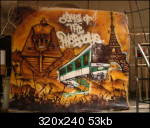Let me tell you this anecdote:
The 2008 Prize for chemistry brings to mind an Innocentive Challenge, to find a biomarker, for Charcot’s Disease – a still incurable type of sclerosis. This challenge, by the way, is still open to the end of the current year, from memory, and is now supported by the Rockefeller Foundation. I echoed this at the time; for the importance of the subject and the equivalent highest award of all Innocentive challenge rewards. In my humbler case it was essentially for marketing purposes-a good thing to do, to help in any small way. It was impossible for me to do more than help a foreign contribution via my english mother tongue. I really took “cold feet” when reading a case study in the ENBIS (European Network for Business and Industrial Statistics) pages of Scientific Computing World-Europa Science. The ENBIS Case concerned a biomarker for something, maybe Alzeimer, something serious in any case. To an innocent novice, such as I, I felt that a biomarker would be less dangerous than a the drug itself. Well, injected into a wee rat - the rat “kicked the bucket” ie died. Injected into our close cousin the pig – it got an unpleasant skin rash, so it was said. Result? This biomarker was abandoned for any human trials.
Funny how the mind can be stimulated by taking any small step forward. This anecdote is just to give the news reader some idea just how serious, difficult and often ungrateful, biomedical-biochemistry can be.
The prestigious 10 million Swedish crown ($1.4 million) prize recognized Osamu Shimomura of Japan and Americans Martin Chalfie and Roger Tsien for their discovery of the protein GFP. The the Nobel Committee for Chemistry at the Royal Swedish Academy of Sciences' statement said:
"The remarkable brightly glowing green fluorescent protein, GFP, was first observed in the beautiful jellyfish, Aequorea victoria in 1962,".
"Since then, this protein has become one of the most important tools used in contemporary bioscience. With the aid of GFP, researchers have developed ways to watch processes that were previously invisible, such as the development of nerve cells in the brain or how cancer cells spread."
Chalfie picked up on the discovery to demonstrate the value of GFP as a genetic tag for biological phenomena and Tsien extended the color palette beyond green, allowing scientists to follow several different biological processes at the same time.
SCIENCE (certainly) AND ART?
The strong green color of the jellyfish protein appears under blue and ultraviolet light, allowing researchers to illuminate cancer tumors, show the development of Alzheimer's disease in the brain or the growth of harmful bacteria. GFP has been used for art as well as for science. A green-glowing bunny named Alba was made in 2000 at the request of Chicago artist Eduardo Kac and green-glowing pigs have been gene engineered and bred to make green-glowing piglets!
Incredible cf. Anecdote above. Reminds me also of Dolly the sheep, 1st known sucessive clone.
Other Posts on Nobel Prizes 2008
Sources
-Yahoo News By Niklas Pollard (Editing by Angus MacSwan)
-Innocentive. ENBIS.
-SCW - Scientific Computing World - Europa Science.
Research Headlines - Nowe narzędzia pozwolą podmiotom zarządzania
kryzysowego poprawić skuteczność swoich działań
-
[image: Image]Sprawne reagowanie na kataklizmy wymaga intensywnych szkoleń,
skutecznych technologii i niezawodnych strategii. Zaprojektowane przez
twórców ...
4 years ago







No comments:
Post a Comment